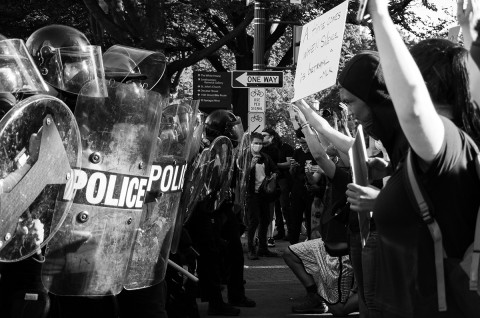The urgent need for deep changes in American policing
Are the police meant to protect people? Or to fight them?

This spring, anti-lockdown protesters threw around phrases like “authoritarian police state” as they asserted a right to ignore public health orders during a pandemic. By late May, we got a glimpse of what such an explosive term really means, as African Americans and allies stood up once again for their right to not be killed by police for no reason.
The killing of George Floyd—and Breonna Taylor and so many others—demonstrates a persistent malady within the culture of American law enforcement: an oppositional, authoritarian stance toward people of color. In the unrest since Floyd’s death, we’ve seen this malady again and again. Police in riot gear have instigated violent confrontations with protesters and bystanders. Even journalists have been targeted for unprovoked assault, intimidation, and arrest. Along with the old trick of hiding name badges, some cops have worn uniforms that don’t even identify their employer. The US attorney general—the nation’s chief law enforcement officer—personally directed police to violently disperse protesters so his boss, the president, could pose for photos after threatening to quell protests with military force.
Researchers and advocates distinguish between a guardian model of policing and a warrior model. Fundamentally, are the police meant to protect people or to fight them? Many individual officers take their vocation to serve and protect quite seriously. But a dominant strain of police culture emphasizes war: bad guys to fight and heavy weaponry to fight them with (see “Militarized policing,” September 17, 2014). At a protest, a guardian approach would mean protecting people’s safety as they exercise their rights and, secondarily, protecting people’s property from destruction and theft. Recently we’ve seen a lot of the opposite, as police in multiple cities gave looters free rein while escalating conflict with protesters.




